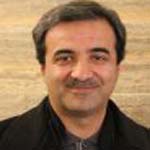Assessment of Ecotourism capabilities using FUZZY ANP method(A case study of Margavar Rural District of Urmia County)
Ecotourism is one of the common types of tourism activities that has attracted a lot of attention in recent years. The ecotourism concept is based on the ideals of environmental protection and sustainable development and refers to a responsible journey to nature with an emphasis on ensuring the improvement of local community life and environmental protection (Seifi and Janbaz, 2017: 479). Ecotourism has a deep connection with sustainable development, which stems from the interactions between tourists and the environment. Proper planning and management in order to develop ecotourism are essential to preserve and maintain the environmental richness of the region as well as the economic improvement of local people (Bunruamkaew and Murayama, 2011: 269). Iran is one of the countries that have a lot of potential for ecotourism development, however, studies show that Iran's natural tourism assets are vast array of scattered, unstabilized resources, and in some cases are on the verge of extinction. The main object of the current paper is to assess the ecotourism potentials and capabilities of the Margavar rural district of Urmia County in northwest of Iran. For this purpose, Analytic Network Process (ANP) and Fuzzy method have been used and ecotourism capabilities zoning map of the study area has been produced.
The current research is a Multicriteria-based study and the Analytic network process (ANP) method and Geographical Information System (GIS) has been used to analyse the data. Spatial criteria were clustered based on reviewing the background into five main groups including climate, human, topography, geology, and tourism and criteria have divided into these 5 groups. At first, the criteria map was prepared in the ArcGIS environment, then all the maps were reclassified with the Reclassify function. In the next step, the criteria maps are standardized with a Fuzzy linear function and the ANP model was run in Super Decisions software, and pairwise comparisons and related super matrices were calculated for the criteria and the relative weight of each criterion was obtained and the resulting weights were applied to maps. Finally, the weighted maps were combined each other using the 0.9 fuzzy gamma operator, and the Fuzzy ecotourism capability zoning map was produced in value 0 to 1.
After designing the network structure, matrices and related super-matrices were calculated and the relative weights of all criteria were determined. Results showed that temperature, geological structure, slope, rain, and tourism facilities have the most importance and weight in relation to the ecotourism ability of the study area, respectively. According to the ecotourism capabilities zoning map, the study area was divided into four class: completely suitable, relatively suitable, relatively unsuitable, and completely unsuitable. The resulting map analysis shows that areas located in the central and western parts of the region, which have a low slope percentage and also include rich pastures and natural tourist attractions, are in the completely suitable group. Furthermore, some parts of the study area have mountain slopes and difficult topographic conditions that are very difficult to access grouped in completely unsuitable lands for ecotourism activities. The final results of the study show that 14.50% of the study area is in the completely suitable class, 26.32% in the relatively suitable class, 27% in the relatively unsuitable class and 32.15% are in the completely unsuitable class
Research evaluations show that In general, Margavar rural district, both in terms of potential for the future development of ecotourism and in terms of Its current situation has a lot of potential in this regard in terms of receiving a large number of tourists That comprehensive planning and formulation of effective solutions in this field can be considered an effective way and an important step to achieve sustainable regional development. Application of multi-criteria analysis techniques such as ANP model and Fuzzy model in this research indicates the great flexibility of these methods, which makes it possible to determine different scenarios and combine different criteria with each other. On the other hand, the use of GIS has provided a good platform for feasibility studies, assessment, and identification of the natural environment. Therefore, it can be said that due to the high potential of the Margavar rural district, there is a need to review measures and pay more attention to tourism development plans and studies in this region.
- حق عضویت دریافتی صرف حمایت از نشریات عضو و نگهداری، تکمیل و توسعه مگیران میشود.
- پرداخت حق اشتراک و دانلود مقالات اجازه بازنشر آن در سایر رسانههای چاپی و دیجیتال را به کاربر نمیدهد.



